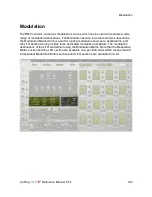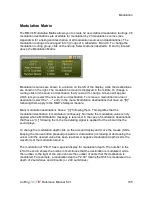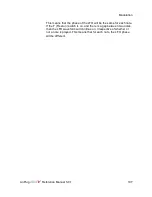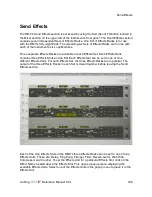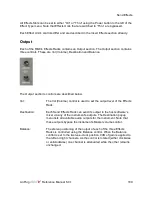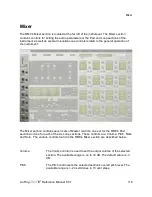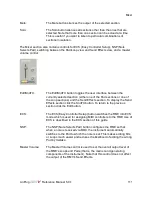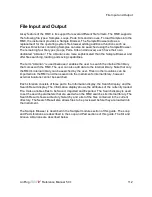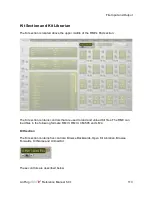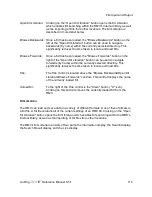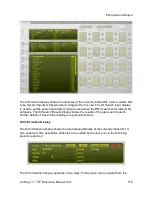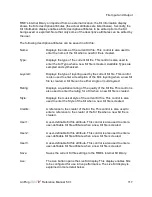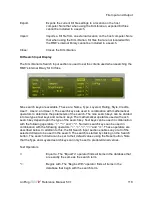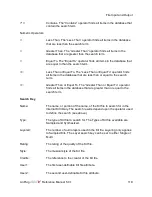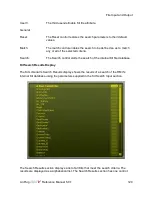
Modulation
LFO
An LFO is an oscillator that generates low frequency signals that can be used to modulate
other aspects of the signal. Each RMV Pad has 3 independent LFOs each offering 5 user
parameters. These are: Wave, Freq(Frequency), Symmetry, Sync and Free Run.
The RMV's 3 LFOs are displayed one-at-a-time. To change LFO, click on the desired LFO
Select button (labelled 1, 2 and 3) located above the LFO.
Wave:
The Wave control is used to select one of the RMV's LFO
waveforms. To select a waveform, click on the waveform control.
This opens a popup menu containing 6 LFO waveforms. These
are:Sine, Triang(le), Sawtoo(th), Square, Noise and SamHo (Sample
and Hold). It should be noted that when the Noise and Sample and
Hold waveforms are synced to tempo, they run at a faster tempo than
the other LFO waveforms. For example, if you set Sync to 1/1, use a
tempo of 120 BPM and play a whole note (4 beats), the duration of
one cycle of the regular waveforms (Sine,Triang(le), Sawtoo(th),
Square) will be 2 seconds. However, the Noise and SamHo (Sample
and Hold) waveforms will change their state within 1/8 of 2 seconds
or 0.25 seconds.
Freq(uency):
The Frequency parameter determines the LFO's frequency (in Hz).
This parameter has no effect if the Sync control is active (see below).
Symmetry:
The Symmetry parameter controls the waveform's shape, stretching
it or compressing it as required.
Sync:
The Sync control is used to sync LFO triggering with the current
tempo (see Appendix B for the range of possible Sync settings).
Free Run:
The setting of the F (Freerun) switch to the right of the Sync control
determines whether or not a new note restarts the LFO. If the F
(Freerun) switch is off, and there is a gap between two notes, then
the LFO waveform will restart from its initial value with each note.
LinPlug
Reference Manual 5.0.1
106













